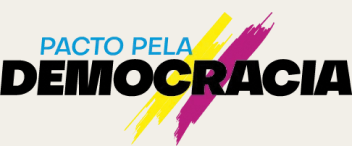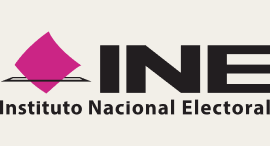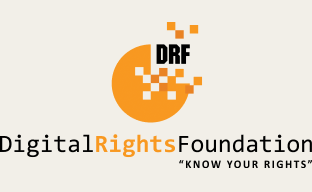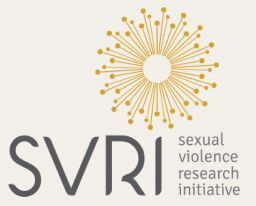International Women’s Day (IWD) (today, March 8, 2022) is an opportunity to celebrate the achievements of women. Importantly, however, it’s also a day for reconciling all insidious forms of misogyny and sexism that not only affect women, but everyone.
To do so requires acknowledging the resilient contributions of women globally, but also the fact that we are far from living in an equal world where all genders are respected, and we each have a unique role to play in getting there.
This International Women’s Day, we reflect on just that: what our role in reaching true gender parity and equity is as an organization steeped in the world of fact-checking and fighting misinformation.
The IWD campaign theme for 2022 is #BreakTheBias – which asks people globally to imagine and fight for a world that is free of bias, stereotypes, and discrimination, and where differences are celebrated and valued. In accordance with this theme, and as part of our reflections on our own role in fighting a patriarchal and sexist society, we are bringing awareness in this post to gendered misinformation – a subset of health misinformation that is under-researched and under-prioritized – with a focus on gendered health misinformation.
In this article, we differentiate between gendered disinformation and gendered misinformation, analyze the ways in which it presents online with a special focus on gendered misinformation in healthcare, and explain why it is an issue of concern to everyone.
Gendered disinformation is a subset of online or gendered abuse that uses heavily stereotyped narratives, fake stories, threats, and sometimes even sexually charged, distorted images to defame women and push them out of the public sphere. Gendered disinformation typically involves tailored harassment aimed to delegitimize and harm the target. Gendered disinformation in how it’s been researched also typically centers on the harassment, defamation, and sexualization of women specifically (though, to be clear, gendered disinformation also severely impacts trans and nonbinary people).
We define gendered misinformation, on the other hand, as the unintentional spread of false or substandard information that either stems from gendered biases, or is specifically about gender. While gendered misinformation can impact anyone of any gender, we see it disproportionately impact women, trans, and nonbinary people. Important note: gendered misinformation can be about sex, and not gender (eg. menstruation), but still be a gendered claim in nature.
Research (albeit limited) is clear that women are routinely targeted by gendered disinformation, typically in the form of intentional and coordinated sexist information campaigns and harassment. The Wilson Center’s report "Malign Creativity: How Gender, Sex, and Lies are Weaponized Against Women Online" identifies the three defining characteristics of online disinformation as 1) falsity, 2) malign intent, and 3) coordination.
Multiple reports have illuminated the real-world impacts of gendered disinformation. One analysis of the 2020 U.S primaries focused on specifically women in politics shows that women candidates were intentionally and falsely attacked more often than male candidates. The Wilson Center report mentioned above found that 9 of 13 female politicians surveyed across three countries and six social media platforms had been targets of gendered disinformation narratives. Across the world, women from politicians to journalists to public health officials have been threatened, harassed, sent to prison, and killed as a result of gendered disinformation.
Unlike gendered disinformation, which is intentional and coordinated sexist information campaigns, gendered misinformation may stem from a combination of external factors and internal factors, such as the lack of access to information and existing stereotyped beliefs. And though it is a concept that is less widely researched and more insidious, we at Meedan witness its spread and impacts every day in our work, and believe that its impacts are pervasive and harmful – in many ways exactly because of its insidious nature.
Gendered misinformation spans topics including politics, economics, health, societal roles, and culture. This post narrows in on gendered health misinformation, given our ongoing digital health work including Health Desk, through which we have observed gendered health misinformation trends since the project’s launch; for example, false claims about vaccines and menstrual cycles and false claims that pregnant people shouldn’t get the vaccine to keep their baby safe.
Both of these are examples of gendered health misinformation, which, again is the unintentional spread of false or substandard information that either stems from gendered biases, or is specifically gendered. The first claim is specifically about people who can menstruate and is a gendered claim. The second claim is both about people who can get pregnant and is rooted in stereotypes about pregnant people needing to sacrifice (unnecessarily) for their baby.
The number of people online increases by the day, and more people have access to the internet than they do essential healthcare services. This ubiquity of the internet combined with rampant sexism and stigma surrounding the healthcare of women, trans, and nonbinary people who already have lower access to quality healthcare than cis men results in a misleading and often harmful ecosystem of gendered health information online.
Every day, people around the world – especially women, trans, and nonbinary people – are bombarded with stereotypes and misleading facts about their bodies and their health. One report, published by Plan International Australia, found that 1 in 5 girls interviewed felt unsafe as a result of online health information, and that, due to misinformation, 1 in 4 questioned whether to get vaccinated against the coronavirus. The study reported that many participants "said they had concerns about fake events advertised on social media placing them at physical risk, or unreliable medical advice that could harm their health or impact their confidence in legitimate medical advice."
In a different study on transgender health misinformation, transgender participants reported getting inaccurate and misleading information online about topics such as hormones, binding (the action of making one’s chest look flatter using clothing, binders, etc.), mental health, surgery, and coexisting conditions. One participant described the following about their experience seeking out health information online: "I was told – rather incorrectly – that my gender struggle (rather, my difficulty to understand what was feelings of dysphoria) was a dissociative symptom and meant I was bipolar and a danger to myself, but not nonbinary." This misinformation led this person to delay seeking care and exacerbated existing mental health challenges – serving as just one example of how gendered health misinformation can actively cause harm.
This pervasiveness of gendered health misinformation is also what we’ve witnessed at Meedan in our digital health work, and has only amplified during the COVID-19 pandemic. This amplification is due to three main factors: 1) an increase in online activity overall; 2) an increase in health concerns both related to COVID-19 and unrelated, as COVID-19 has dominated healthcare for two years and worsened healthcare and health outcomes as a result; and 3) a decrease in opportunities and quality of life for women, trans, and nonbinary folks since the onset of the pandemic.
Common gendered health misinformation topics include vaccines, hormones, hormone replacement therapy (HRT), menstruation, fertility and pregnancy, birth effects, abortion, sexually transmitted infections, diet, gender-affirming care, and intimate partner violence – among many others. This type of misinformation can be especially misleading and harmful because these topics are stigmatized – meaning that people may be more likely to look for answers online than elsewhere.
One stark example of gendered health misinformation is the wide range of rumors about the COVID-19 vaccines and their supposed effect on fertility, menstruation, and pregnancy. We have received requests on Health Desk to address misinformation claims including "COVID-19 vaccines cause the placenta to not develop and lower fertility," "COVID-19 vaccines causing birth defects," and "COVID-19 vaccines alter menstrual cycles for life." These claims are widespread and erode trust in vaccines on aggregate, not just for people who can menstruate or bear children, showing how gendered health misinformation isn’t just a problem for the group being targeted, it’s a problem for everyone in that it reinforces gender stereotypes and promotes invalid science.
As evidence of this, one U.S-based survey by KFF found that out of about 1,500 nationally representative study participants, one third reported that they heard that COVID-19 vaccines caused infertility and either believed the myth was true or weren’t sure. Infamous vaccine scientist turned vaccine skeptic Robert Malone has also erroneously claimed that mRNA COVID-19 vaccines cause significant disruptions in periods and miscarriages, citing that as one of the reasons that mRNA COVID-19 vaccines are dangerous.
For context, data shows that COVID-19 vaccines may cause a small increase in period cycle length by about less than a day after each dose, with any effects not lasting past that single cycle. There is no current evidence that the COVID-19 vaccines cause miscarriage, but that claim is being used as a significant selling point for why the vaccines are dangerous. This example is just one of many in which gendered health misinformation not only targets women and people who menstruate, but is used to push broader health misinformation narratives.
Examples of gendered health misinformation claims unrelated to COVID-19 include "partners will be able to tell if you’ve had an abortion," "feeding your baby formula as opposed to breastfeeding is wrong and harmful," "transgender children are undergoing irreversible medical changes by transitionin," "polycystic ovary syndrome (PCOS) is caused by the person who has it," "using tampons causes cancer," "if you got the HPV vaccine, you can skip your pap smear," and "intimate partner violence doesn’t cause serious health problems."
Gendered misinformation, and particularly gendered health misinformation, is an emerging concept that requires more research and refinement centered on those most impacted. We’re looking forward to diving into these claims further in future research, and shedding light on the ways that gendered health misinformation both harms and serves to uphold patriarchal values. Doing so is one small part of our own commitment to break the bias not only on International Women’s Day, but every day.
We collaborated with 53 partner organizations worldwide to design and carry out our 2024 elections projects. We extend special gratitude to our lead partners in Brazil, Mexico and Pakistan, whose work we highlight in this essay.



The 2024 elections projects featured in here would not have been possible without the generous support of these funders.




Footnotes
References
Authors
Words by
Jenna Sherman, MPH, is a Program Manager for Meedan’s Digital Health Lab. Her work has focused on digital health challenges across information access, maternal incarceration, and discrimination in AI. She has her MPH from the Harvard T.H. Chan School of Public Health in Social and Behavioral Sciences.







